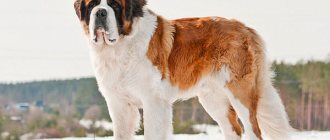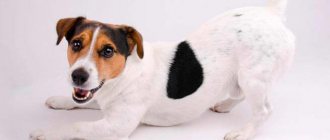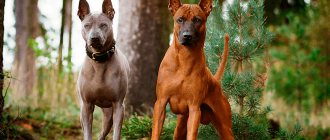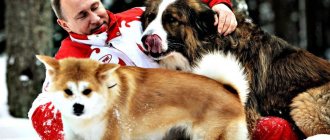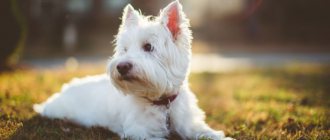- Dogs
A dog is man's best friend, everyone has known this for many years. However, there are not just friends, but real savers of human lives. Some breeds are better than others amenable to training to provide first aid in any extreme situation - we’ll talk about them in the article.
Of course, special, exaggerated requirements are put forward for dogs that are called upon to save human lives:
- Excellent sense organs: eyes, ears, nose.
- Determined but good-natured character. The dog must make good contact with any person, because hundreds of different “souls” will have to be saved.
- Good physical fitness and endurance. On the path to a noble goal, you will certainly have to overcome many obstacles.
- Stable nervous system. The dog will have to work hard, and he must always be in excellent shape.
- Obedience. The dog must be easy to train.
What can a rescue dog do?
Bloodhounds specialize in finding missing people and rescuing them in critical situations. They are required to perfectly, even in pitch darkness and bad weather, search various territories in a short time, including moving over rough terrain; carry out searches in rubble and ruins resulting from dam breaks, fires, explosions due to gas leaks, floods, earthquakes and other natural disasters.
A rescue dog must be able to work without a collar and leash in difficult terrain, equipped with special devices. A trained animal cannot be afraid of the smell of gas, fire and smoke, or react to noise.
To search for drowned people, brave dogs need to be able to act independently, moving by swimming; and also, while in a boat with people, locate victims under water.
Features and history of the rescue dog
Representatives of the canine family, devoted to man, are called upon to serve him by nature. In exchange for their service, they received warmth, care and affection. Animals related to wolves were present in the lives of primitive people. They helped in the hunt, protected the home from wild animals, licked the owner’s wounds and warmed them with their warmth in severe frosts, and served as shepherds.
Rescue dog
Gradually, the ancestors of wild domesticated animals acquired the appearance and features of modern dogs. Previously, wild dogs have proven themselves not only to be devoted companions, but also to be hardy, strong guardian angels. This is how the first rescue dogs appeared.
Interesting! Dogs, demonstrating love for their owner, saved his life not only in battles with enemies, but also during floods or fires, found and pulled out from under snow rubble or collapsed buildings.
A devoted dog is able to intuitively sense danger, possessing an incredible sense of smell; he is able to sense the scent of his owner under a layer of snow several meters deep, and smell the burning smell of an approaching forest fire from a great distance.
Over time, dog breeds began to be artificially bred from the most capable representatives to save human lives during natural disasters, search and protect in extreme conditions. This practice proved effective because it required a four-legged rescuer less time to complete the task than a human in situations where the time to rescue was measured in minutes.
A dog trained to rescue from rubble
Diver character
Despite all his external menacing appearance, the Newf is an incomparably affectionate and gentle dog.
This breed has practically no hunting or guard qualities; the breed was not bred for this purpose. As you remember from the history of the breed, the dogs originally lived on the island, then they were brought by fishermen. And for fishermen, what is much more important is not the hunting qualities of the accompanying dog, but fearlessness and devotion, so that the pet, without hesitation, rushes into the water if something happens to the owner.
To this day, Newfoundlands “work” on the water, rescuing drowning people. A strong dog saves lives in water, on land, and in the mountains, looking for survivors under rubble or under snow after an avalanche. But in addition to performing such complex and responsible work, divers easily, and, most importantly, enjoy babysitting children.
Newfies are excellent friends, affectionate, gentle, loyal, intelligent.
Despite all their seriousness and high level of intelligence, divers are not such “obedient sheep”; they can resist. However, in an emergency situation, dogs make decisions themselves, rather than waiting for a command. And their decision is almost always correct.
The dog is not afraid, so you can safely go somewhere with it on a bus or train, leave your children, or go to noisy holidays. A dog with a normal, balanced psyche will not shake, hide behind you, or follow you on half-bent legs.
The animal is very strong, so it can drag heavy loads, but a sled with a child or a bag from a store will seem light for a “diver”.
Rescue dogs of the Ministry of Emergency Situations
Long-haired dogs: large breeds with a long muzzle
In the service of the Ministry of Emergency Situations, four-legged rescuers have long been used as assistants. There is a special unit of the search canine service. The main advantage of search dogs in emergency situations is their sense of smell. For service in the structures of the Ministry of Emergency Situations, they use Labrador, shepherd, spaniel, terrier, pit bull, Rottweiler, husky, fox terrier and some other breeds.
The specialization of dogs in the service of the Ministry of Emergency Situations is divided into:
- mine detection service;
- mountain avalanche service;
- search for bodies of the dead;
- search and rescue service;
- water rescue service;
- search for victims by smell.
Service dogs are engaged in rescuing people injured in various disasters, finding lost tourists, being on duty near bodies of water, and also helping in various hot spots.
Four-legged water rescuer
During the existence of the canine service, dogs took part in mine detection operations, saved people after earthquakes and tsunamis, played an important role in preventing terrorist attacks, etc.
Interesting! A dog enters service as a puppy, and it takes up to 1.5 years to train.
Comments from the senior crew of the canine group of the Moscow PSTS, PSO-207 Dmitry Yashchenko
What can you say about rescue dog breeds?
Everything is written correctly in the article. It is worth noting that there are dogs of the Laika breed, but there are very few of them in service. A very independent animal with strong hunting instincts. Now there is a husky Gray in Kaluga, a dog handler Lena Golubkova, and Igor Konyashin had a cool Tomasyonok in Orel, he later worked with him in MosOblSpas in the 23rd PSO. Moreover, Tomik was a hunting dog, if Igor took a gun, Tom worked on the animal, if dad didn’t have a gun, he worked to find people! There were cool bull terriers, now there are a lot of border collies and malinois.
Is the breed of dog very important?
In general, the breed is not that important. The main thing is that the dog is not very heavy - 40 kg is almost the limit (Easterns, Labras, Rottweilers). A heavy dog cannot cope with searching in the forest; it will quickly get tired in the rubble. Injuries to the paws of giants are more frequent and more severe, but the dog should not be very small either. Its height should allow it to overcome obstacles in the rubble and provide a good sensing range in the forest. As a rule, tall dogs have a longer scent range. The little ones have a hard time working in dense undergrowth and tall grass. Fizukha is very important. Then, of course, a good instinct, a desire to work. We develop all this during training. But we try to select dogs with good inclinations. This is the balance)))
How quickly can you raise a four-legged helper?
One of the most important points is mutual understanding and trust within the relationship between a person and a dog. During the search, a person should not suppress the dog, the dog should work easily, freely and proactively without fear of mistakes, and the dog handler should guide this process and carefully help. The calculation works!!! Together!!! It’s difficult, it doesn’t happen right away. Duet!
Do dogs have tests or exams?
Dogs, together with a dog handler, undergo annual certification for permission to work for their intended purpose. It includes a stage of testing obedience and dexterity and two search stages (natural and man-made). Simply put, searching in the forest and in the rubble. There are differences in difficulty classes. A-initial, A-confirmation (more difficult), B-class is assigned at certification or at competitions, the territory searched by the dog is one and a half times larger, you need to find not three people as in A-class, but four in the same twenty minutes. And the bookmarks themselves are more complex and cunning. This is the level of very experienced crews who have plowed together for more than one year; for their merits they are awarded class C. By the way, competitions at the level of the Russian Championship are held every two years.
Competitions? Can you give more details?
We performed at the PSS World Championships, also according to IRO (European) standards. Significantly closer to reality and great for engaging mental activity. The judging is interesting. The work is assessed according to many criteria and is immediately examined in detail for everyone to hear.
Thank you for answering the questions, is there anything else you would like to add?
What else would you like to say? The same calculation can be certified for several types of services. For example, many Labradors are certified in both PSS and water rescue, and if this Labrador is from the South or the Caucasus, then it definitely also works in mountain avalanche. Also, 2 dog handlers can be certified with the same dog - all these are two different calculations. There aren't many of us... For example, there are only 7 full-time dogs in all of Moscow. Of course, there is Tsentrospas with 25 dogs and Leader with three, but they are Ministerial. There are 2-4 dogs in the regions.
We invite you to watch this educational video:
Stories of the most famous rescue dogs
Fluffy dogs: small and large shaggy breeds
The Siberian Husky named Balto has become perhaps the most famous dog in the whole world. The dog's feat was that he helped stop the diphtheria epidemic in the small town of Nome in Alaska in 1925. Due to the snowstorm, it was not possible to deliver the necessary vaccine. The decision was made to deliver the medicine by dog sled. Thanks to the leader Balto, they did not lose their way in the blizzard and the vaccine was delivered and the epidemic was stopped. Balto became a national hero.
Balto, who saved the city from the epidemic
Another rescue dog lived in the mountains of Switzerland at the monastery of St. Bernard in the early 19th century. The monastery was located near the pass connecting Italy and Central Europe. Travelers often stopped at the monastery if necessary, but unpredictable weather could take the traveler by surprise and lead to death. The monks bred a breed of large, hardy and kind dogs, trained them to find people under the snow and provide assistance.
Interesting! It was the monks who bred purebred St. Bernard dogs.
The most famous St. Bernard rescuer was a dog named Barry. According to various sources, Barry managed to save 40 people. One of Barry's most memorable stories involved rescuing a little boy caught in an avalanche. The dog was able to find the child under a snowfall, warmed him up and dragged him towards the monastery. When the boy regained consciousness, he climbed onto the dog's back and thus Barry brought him into the warmth. The boy survived and returned to his parents.
Saint Bernard
Perhaps even people who are far from dog breeding in general know about this breed. The thing is that a dog of this particular breed starred in the well-known film “Beethoven”. Unlike divers, St. Bernards do not like “water procedures” too much. But they are great for working in high altitude conditions. They are able to find people caught in an avalanche in any weather and at any time of the day.
Due to their large size and incredibly developed undercoat, St. Bernards are able to withstand extremely low temperatures for a long time, while maintaining efficiency and a cheerful mood. Often, dogs rescuing people in the mountains have containers of water or alcohol attached to their collars, and backpacks with insulating blankets and dry rations are hung on their backs. Due to their size, St. Bernards can easily carry a few extra pounds, and rescued people can immediately quench their thirst, eat and warm up.
stuffed dog Barry
Interesting Facts
Toy dogs: small indoor breeds
Every year, in different places around the world, service dogs do not hesitate to risk their lives to save people. Modest four-legged heroes evoke respect and admiration from people. There are many interesting facts from the life of rescue dogs:
- Animals have been search engines for over 300 years. The first dogs helped search for people under snowfalls in the mountains.
- Rescue dogs are known to find people by smell. The mechanism of action of this process has not yet been studied. It is impossible to create a device that replaces a dog's sense of smell.
- Experts say that one search and rescue dog can do the work of 20 or 30 professionals.
- In one day, a furry employee, accompanied by a dog handler, is able to examine an area of 1 square meter. km.
- On cloudy days and at night, it is much easier to detect the source of the odor than on calm, sunny days.
- Most often, herding and hunting breeds of dogs are trained for search and rescue work.
- Puppies begin training at the age of 3 months. If, after training, the dog does not show rescue qualities, it is transferred to the service for detecting explosives or drugs; they can become a help to people in need of accompaniment or simply an obedient family pet.
- Since the work of a rescuer requires a lot of concentration, such four-legged employees retire at the age of 8-10 years.
- Dogs trained to search for the dead are called “cadaver” dogs in professional parlance. They are able to detect whole and decomposed corpses even under water or buried in the ground.
- Often service dogs accompany their canine companions even on vacation.
Service dogs
How to choose a puppy?
If you are planning to purchase a puppy for protection and rescue work, then you should conduct several tests that will show whether the animal is suitable for such work or not. It is important to check the dog's reaction to a stranger at the moment when the puppy sees him for the first time.
The experiment is quite simple: you need to squat down in front of the dog, then get up very quickly and go down again, after which make several loud claps over the puppy’s head. Next, you need to throw an object that makes noise next to your pet: a rattle, keys or a tin of peas. You can wave a newspaper over your dog's head.
If the puppy does not begin to bark hysterically, become nervous, show aggression or, conversely, take a pose of submission, does not make an attempt to escape, but at the same time does not show intense joy, then it can be considered to have successfully passed the test.
And, of course, for special service you should choose healthy puppies without genetic diseases.
Nuances of training and requirements for pets
To work in the rescue service, dogs are trained by special instructors (dog handlers). Training takes place 3-4 times a week for 2 hours. After 2-3 weeks, the student can find a person under the rubble of snow or stones. When a victim is detected, the dog must give a voice and make a stance.
Interesting! The dogs are trained in a playful way and they usually serve with their canine trainer.
Puppies designed to save people’s lives are subject to strict, exaggerated requirements:
- developed sense organs (vision, hearing, smell);
- good-natured character and determination;
- endurance and developed physical strength;
- stable nervous system;
- obedience.
Learning process
Checklist for those going to the forest
How to prepare for a forest walk
It is important to have basic navigation skills: be able to use a tourist navigator and compass
Carefully study the map of the area, take it with you in printed form, pay attention to landmarks that you meet along the way. Only good knowledge of the area and the ability to use a map, compass and navigator will help you not get lost in the forest
How to instruct a child
Explain to your child that under no circumstances should he approach rivers, ponds and other bodies of water alone or go into the forest without adults.
It is also necessary to discuss basic safety rules.
- If you get lost, stay where you are and don't go anywhere.
- Always respond to noise with noise.
- Be sure to call 112 and save your phone charge.
These and many other rules are posted in the “Lisa Alert School” group on VKontakte in the form of audio tales.
What to take your child with you
Pack your child's backpack: put a whistle, a bottle of water, a snack in it (a chocolate bar, dried fruit or nuts will do). Take a fully charged phone with you and teach your child to do the same.
How to help elderly parents not get lost
In order not to get lost, they do not need to go into the forest. Very often we look for those who “walk only along the edge of the forest”, “do not go far”, “walk only along the paths” and “know this forest like the back of their hand”. But there are several rules that need to be explained to grandparents, because they will help you find them in the forest much faster.
The most important thing is to take a charged phone with you into the forest. Elderly people often leave their phone at home, even if they have one, just so as not to lose it. It’s worth explaining that getting lost yourself is much worse. Searching for a missing person in the forest with and without a working phone are two fundamentally different searches with different chances of success.
It is worth agreeing that they will warn you where and for how long they are going, so that you can sound the alarm in time. You should know which forest your relative goes to and where he enters, in which direction he usually goes in the forest - this will greatly help with a possible search.
Explain to them that they need to wear bright clothes (for example, red or orange) in the forest and be sure to take with them a supply of water and a snack, matches, and a whistle. I would also like to make a special note about camouflage and khaki-colored clothing - this is the worst option for going into the forest, since it is almost impossible to see a person dressed like that in the foliage.
What to do if someone goes missing in the forest
First of all, don't hesitate. You need to call us as soon as you realize that your child is lost or your grandfather should have returned from the forest three hours ago. Many people first wait until dark (in case an elderly relative returns) and only then call rescuers. This is partly why most of the searches in the detachment begin closer to night.
Call the Rescue Service at 112 and the 24-hour hotline of the Lisa Alert search team at 8 800 700 54 52.
What information will help rescuers
When interviewing the applicant for a forest application, we will ask about the signs, clothing, health and character of the missing person, whether he has been in this forest before, when and how often, what he collects in the forest (if mushrooms, then what kind), and also ask him to send a photograph.
It happens that applicants do not understand why there are so many questions: “After all, we need to go look faster.” They can be understood. They worry about their loved one. However, we ask all these questions because the answers to them are really what we need to find. Some are for orientation, others are for understanding how a person will behave in the forest in an extreme situation and what the search strategy should be.
Is it worth going out on your own to search for the missing person?
Under no circumstances should you start an independent search, for example, for a child in the forest, since after this you will have to search not only for the child, but also for the parents. It is necessary to immediately contact specialists.
Best Rescue Dog Breeds
Newfoundland (second name diver) is a water rescue dog. This breed with a good disposition is capable of covering long distances on water, swims well and can calmly pull out a drowning person. In addition, dogs have well-developed instincts, so they quickly react to dangerous situations on the water. The Newfoundland is also capable of diving to depths of up to 30 m.
Newfoundland rescue
Labradors are the kindest dogs that help rescuers. They are able to learn quickly, show patience and compassion. Dogs play an important role in the elimination of natural and man-made disasters.
Important! When choosing the best breed for service, external characteristics are taken into account. Thus, long-haired shepherds will take great risks in a fire, and smooth-haired Dobermans are unlikely to jump into cold water.
Labrador in service
Saint Bernard is suitable for rescuing people in the mountains. Large size, physical strength and dense coat allow representatives of this breed to feel good in subzero temperatures.
Mountain rescuers at work
German Shepherds have exceptional intelligence and phenomenal learning ability, which is why they are indispensable employees of rescue services.
Leonbergers are highly trainable and have an excellent sense of smell, which is why they often become detectives.
There are many other dog breeds that are ready to help. Furry helpers help not only rescue services, but also victims of difficult circumstances. Many hero dogs gave their lives to save people.
Basset Hound
Short-legged dogs have a charismatic appearance and a friendly character.
Translated from French, “bas” means “dwarf”, “low”, so the name of the breeds speaks for itself. It is impossible to confuse basset hounds with other dogs - only they can have such a sad and melancholy look, long ears that drag on the ground and “fleshy” wrinkled sweets on the neck. Magnificent hounds that accurately follow the scent even in the most difficult weather conditions. They are sociable and flexible in everyday life. Quite stubborn and capricious, as well as pathologically slow. They are difficult to train, but they smooth out this deficiency with their curiosity and peacefulness. When alone, they usually sleep. Average weight - 23-27 kg, height - 32-38 cm. It is not easy for them to learn to go to the toilet on the street. They are among the “drooling” dogs and require constant hygiene around the mouth. It is also necessary to monitor folds and ears, wiping them with disinfectant solutions and lotions. Basset hounds are prone to obesity, so they need exercise and daily walking. Often animals have to be literally forced to run and jump against their will. Due to the disproportion of their body, they often carry a lot of dirt and dust. They shed moderately and do not require frequent brushing.
Sled breeds that have not received recognition, mixed, developing.
Having dealt with the breeds included in the FCI documents, we cannot help but say about those that are not yet officially recognized, but have brilliant prospects in this regard.
Alaskan Husky
Indigenous representatives of the aboriginal fauna with “wild” ancestors. They differ from their Siberian relatives in character and smaller dimensions. The breed was formed naturally, without human intervention. The dogs turned out to be strong, hardy, and also unpretentious, because individuals with poor health and constitution died in harsh climates. Today, Alaskan huskies are considered perhaps the fastest sled dogs. Despite the temporary lack of official status, the breed is very popular in the United States.
The Alaskan Husky resembles its Siberian counterparts in appearance.
Sakhalin Husky (Karafuto-Ken, also known as Gilyak Laika)
This domestic variety of mounts, which, oddly enough, is popularized by Japanese cynologists, was created for use for transport purposes, but thanks to courage and fearlessness, they began to be used by hunters for hunting animals.
If not for the donut tail, it would be an almost white wolf
Chinook (Chinook sled dog)
Representatives of this breed are large dogs (up to 45 kg in weight and up to 75 cm in height). They have well-developed bones and muscles, excellent health, and a calm temperament. Chinooks are used for riding and transporting goods, and in terms of running speed they are only slightly inferior to the recognized champions - huskies. If you keep a dog properly and raise it correctly, you can grow it into a friend and a guard, so docile and versatile are the representatives of this breed.
Hardworking Chinooks
Norwegian sporting mixed breeds (Greysters)
Dogs of a special breed, in the formation of which German shorthaired pointers and pointers, as well as greyhounds, took part. Mestizos were bred exclusively to participate in racing competitions. The animals performed well in competitions in skijoring (cross-country skiing) and bikejoring (towing mountain bikes).
The winning team
Wolfdog
This is the name given to mixed breeds obtained from the mating of a German shepherd and a wild wolf. They are used as mounts and guards. The first generations of puppies were distinguished by an unstable psyche and corresponding behavior. Breeding wolf-dogs is an attempt by domestic biologists to create a dog with universal service characteristics. However, most of the offspring remained in the ownership of the breeders. Some individuals were rented (not sold!) for official purposes.
This is what a wolfdog looks like - a service dog of wolf origin
Wolf dogs during the race
Eskimo Husky
One of the varieties of northern sled dogs. Representatives of the breed are strong, hardy, and almost never bark. The homeland of the Eskimo husky is Eastern Siberia. In the 20th century, dogs became popular in Alaska and Greenland. Nature has endowed these dogs with a stern character and courage, so the “Eskimo” can not only transport cargo, but is also an excellent watchman, as well as a reliable hunting assistant.
Eskimo Husky
Yakut Laika
An old breed of dog from Northeast Russia. Yakut dogs are universal. Like some other sledding breeds, they cope with transport tasks, and also have hunting and guard qualities. Yakut Laikas are distinguished by their sharp mind and sociable character, they sincerely become attached to a person and serve him with great diligence.
The Yakut Laika is not afraid of harsh winters
This is not a complete list of sled dogs, whose working abilities people have long appreciated and successfully use. Despite the fact that the dogs are not yet recognized by the Fédération Cynologique Internationale, many breeders and dog handlers believe that it is just a matter of time.
Team of Yakut Laikas
Labrador retrievers
Despite all their beauty and cuteness, these dogs with intelligent eyes and very beautiful hair are not only adored pets, but also “serious” rescuers. They are often used on a par with St. Bernards, and that’s saying something!
Moreover, Labradors are often considered one of the most versatile rescue and search breeds, since they can work equally effectively in water, high mountains, and in the ruins of cities damaged by earthquakes.
Thumbs up if you liked the article.
Subscribe to our channel.
- Thank you for reading us. —
Everyone knows that a dog is man's friend. But not everyone knows that some of them are not just friends, but real rescuers who help people in extreme situations and even provide first aid. We will talk about these amazing animals in our article.
German Shepherds
It is not for nothing that “Germans” are considered one of the most unique and useful breeds. But, contrary to popular belief, they are actively used not only for the needs of the army and police, but also as members of rescue teams. Yes, German shepherds cannot dive tens of meters, and they can withstand the brutal conditions of the highlands much worse than St. Bernards. But this breed is more versatile and flexible.
For example, in the highlands of the Austrian Alps, German shepherds are used in police stations with equal success both to search for crooks and to rescue people lost in the mountains. These dogs have an excellent sense of smell, so they can find a person within a couple of hours.
